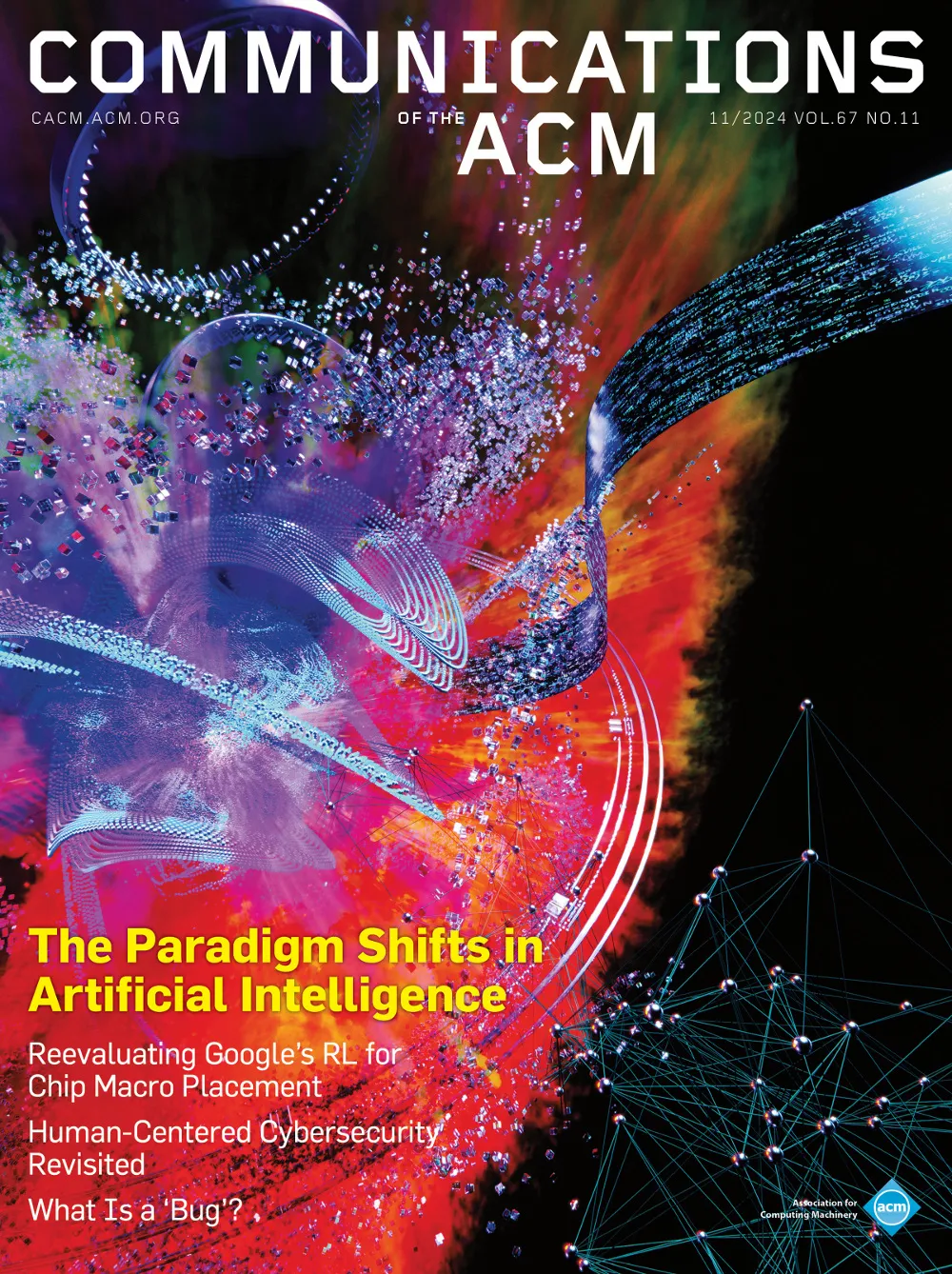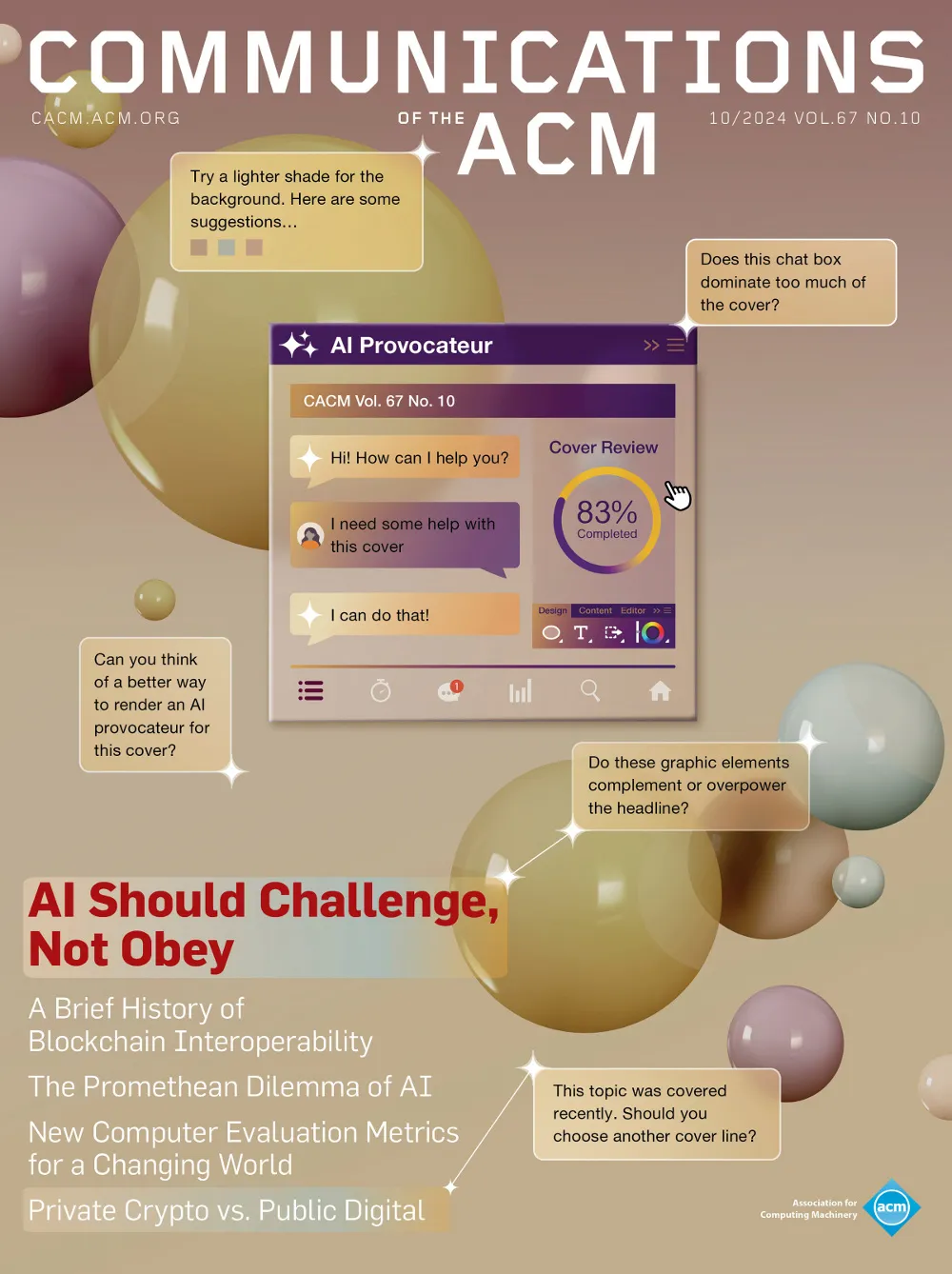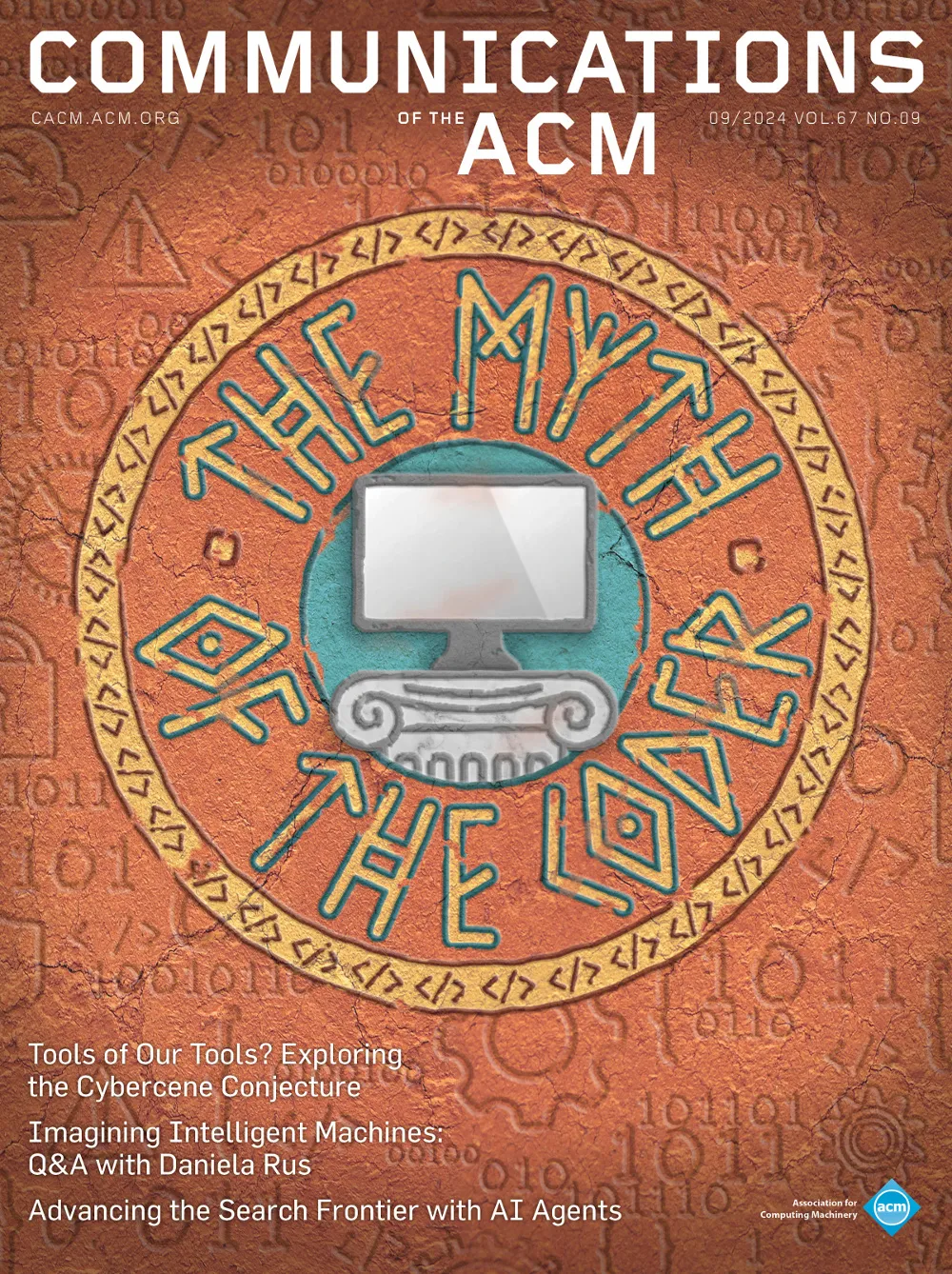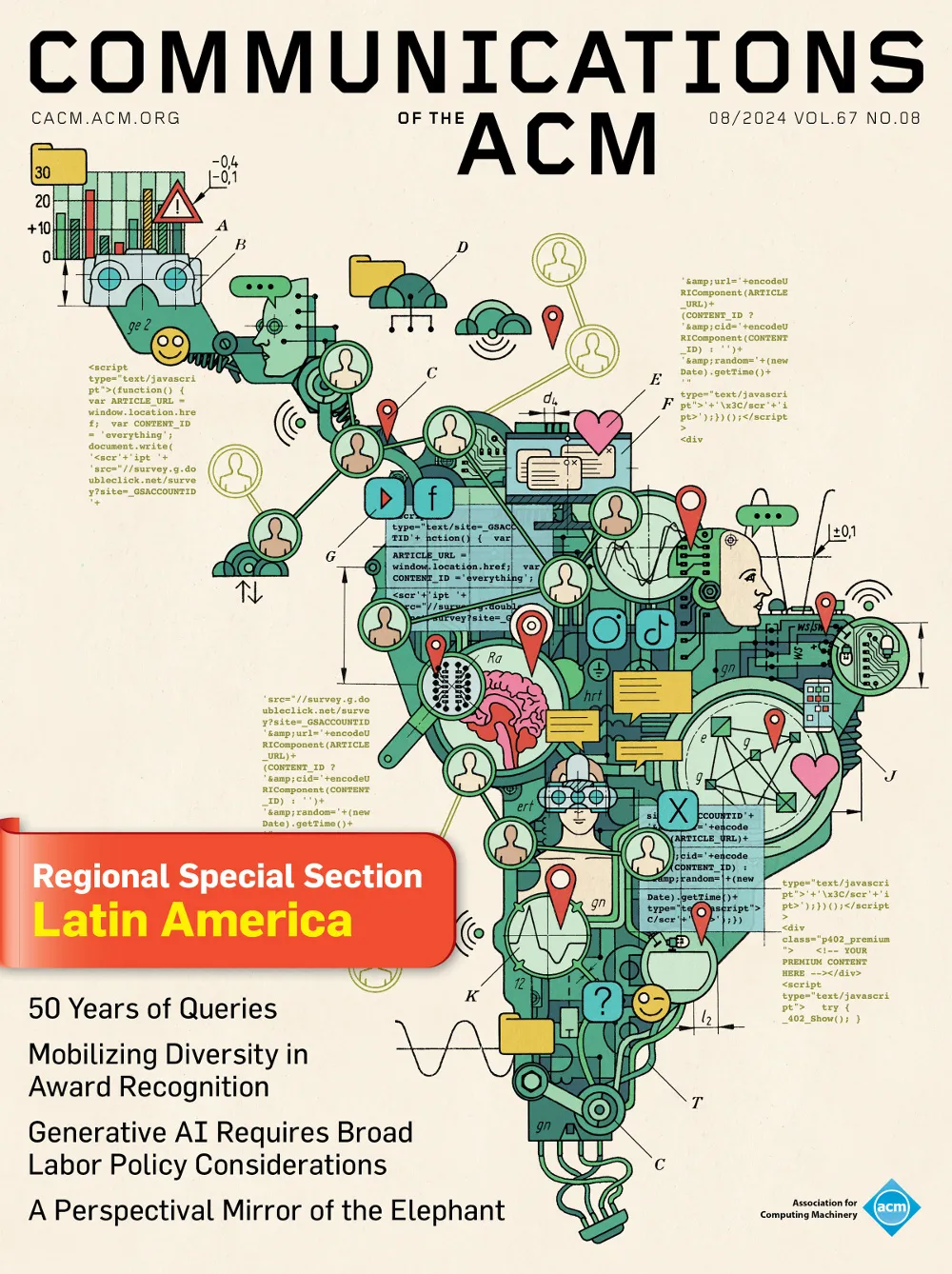June 1968 - Vol. 11 No. 6

Features
An implementation of Stiefel's exchange algorithm for determining a Chebyshev solution to an overdetermined system of linear equations is presented, that uses Gaussian LU decomposition with row interchanges. The implementation is computationally more stable than those usually given in the literature. A generalization of Stiefel's algorithm is developed which permits the occasional exchange of two equations simultaneously.
Computer Systems: Reliable full-duplex file transmission over half-duplex telephone line
A field-proven scheme for achieving reliable duplex transmission over a half-duplex communication line is presented, and to demonstrate the difficulty of the problem, another similar scheme, which is only slightly unreliable, is also presented. A flowchart for the reliable scheme and some interesting examples are given.
On the design of display processors
The flexibility and power needed in the channel for a computer display are considered. To work efficiently, such a channel must have a sufficient number of instruction that it is best understood as a small processor rather than a powerful channel. As it was found that successive improvements to the display processor design lie on a circular path, by making improvements one can return to the original simple design plus one new general purpose computer for each trip around. The degree of physical separation between display and parent computer is a key factor in display processor design.
Scientific Applications: BRAD: the brookhaven raster display
A multiconsole computer display system has been designed that provides very rich displays at low unit cost. Each BRAD (Brookhaven RAster Display) console can plot tens of thousands of points, or up to 4000 characters at 30 frames per second. After an initial display system investment of $50,000, each display, with teletype, cost less than $3,000.
The technique employed is that of programmatically generating a binary image of the desired display in a computer. The image is written on a rotating drum memory. Independent read heads continuously display the picture, which is generated by swept horizontal lines. A standard TV monitor serves as the display device.
The technique has two drawbacks. A computer must compute any image to be displayed. Also, the “pointing” interaction is more difficult. This is because the pointing function gives only the coordinates of the point on the screen. The inverse of the map generation process is required to calculate the coordinates at the input space.
An inexpensive braille terminal device
The active use of time-shared facilities for blind programmers requires a braille terminal system. Details are given for the construction of a brailler from a model 33 teletype by modifying the print head and increasing the resiliency of the platen. A description of the programming needed to drive the brailler is presented.
Programming Techniques: Regular expression search algorithm
A method for locating specific character strings embedded in character text is described and an implementation of this method in the form of a compiler is discussed. The compiler accepts a regular expression as source language and produces an IBM 7094 program as object language. The object program then accepts the text to be searched as input and produces a signal every time an embedded string in the text matches the given regular expression. Examples, problems, and solutions are also presented.
Writing an online debugging program for the experienced user
Presently available online debugging routines are often unsatisfactory for the experienced user because they require unnecessarily rigid and complicated typing formats, make it difficult for the user to correct typing errors, and consume excessive memory with intricate features. In a debugging program it is of prime importance that the program be simple, flexible, and highly efficient to use. Communication between the user and the debugging program can be improved by using certain techniques applicable to most online debugging programs.
These techniques are presented and are illustrated by their use in OPAK (octal package), a debugging program coded for the PDP-5/8 and the SDS-930.
The compromise between economy of utility program core storage and incorporation of elegant debugging features is discussed.
Standards: Heading format for data transmission (A USAAI) tutorial
This paper is for information purposes and is intended as a comprehensive thought-provoking collection of the major aspects and considerations influencing Heading Format for Data Transmission.
Information processing systems of today have outgrown the confines of the attended and isolated system environment. They now perform information interchange via communication networks, often with many real-time aspects. This interconnection of information processing systems via communciations networks requires that the two (or mo re) stations performing information interchange operate by agreed upon information formats. It is the intent of this paper to discuss the uses and organization of all known items that might be included in one type of information format: Heading Format. This paper is an attempt to provide an all-inclusive list of heading format items, thoroughly describle and discuss each item, and arrange the items in a logical sequence. This will establish a comprehensive heading format item sequencing list that individual message transfer systems may draw on to obtain consistent and usable message formats. It is not proposed that all heading format items or even that any one particular heading format item be mandatory for any system.
This paper explores the implications of the use of heading format for generalized information generalized information interchaneg and the criteria on which a future heading format standard could be based.
The following guidelines were used as a basis for the Task Group's work on message formats.
The initial goal of the Task Group should be to prepare a tutorial paper on message formats. In the future, the Task Group may wish to prepare a standard covering message formats if this is found to be desirable.
The Task Group should avoid message format (heading) definitions that are too narrow in scope; that is, a message heading should not be defined in such a manner that it is only applicable to a relatively small class of systems (e.g. store-and-forward).
The doctrine for the use of message headings should be such that, by logical extension, it can meet the needs of communication systems that have different degrees of sophistication.
A futures market in computer time
An auction method is described for allocating computer time that allows the price of computer time to fluctuate with the demand and the relative priority of users to be controlled so that more important projects get better access. This auction is free of the periodic fluctuation in computer use often associated with monthly schemes.



